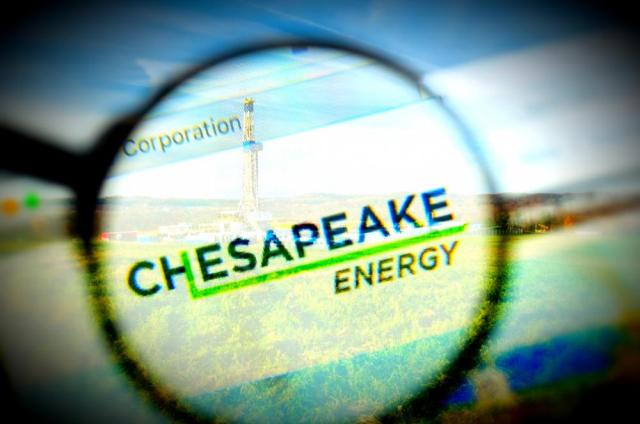
(Source: Hart Energy; Casimiro PT/Shutterstock.com)
Chesapeake Energy Corp. filed for Chapter 11 bankruptcy on June 28, as the former U.S. shale star looks to reset its balance sheet.
Following other shale producers Whiting Petroleum Corp. and Extraction Oil and Gas Inc., Chesapeake’s filing marks the biggest U.S. oil and gas company to go bankrupt since the downturn related to the COVID-19 health crisis began.
The Oklahoma City-based company, which helped spearhead the shale revolution a decade ago, has widely been expected to enter bankruptcy as it struggled with mounting debt burdens. Chesapeake said in a recent regulatory filing it had skipped an interest payment due June 15 on some of its notes and that its borrowing base had also been slashed by lenders.
On June 28, Chesapeake said it expected to eliminate approximately $7 billion of debt through its Chapter 11 plan of reorganization. The result, according to CEO Doug Lawler: “addressing the legacy contractual obligations that have hindered our performance.”
“We are fundamentally resetting Chesapeake’s capital structure and business to address our legacy financial weaknesses and capitalize on our substantial operational strengths,” Lawler said in a statement on June 28.
RELATED:
Chesapeake Energy: Rise and Fall of a US Shale Star
Bankrupt Chesapeake Asks to Cancel Pipeline Contracts, Sets Drilling Cuts
Chesapeake owes about $250 million in payments this year on portions of its nearly $9 billion in outstanding debt, Reuters recently reported citing public filings. The company had about $82 million in cash and untapped credit lines of about $1 billion at March 31, the Reuters report said.
As part of a restructuring support agreement with its lenders, Chesapeake has secured a $925 million in debtor-in-possession (DIP) financing, which the company said will provide it with the capital necessary to fund its operations during the Chapter 11 process.
Additionally, the company and certain lenders have agreed to a $2.5 billion exit financing, which will consist of a new $1.75 billion revolving credit facility and $750 million term loan. Chesapeake added in the release that it has the support of its term loan lenders and secured noteholders to backstop a $600 million rights offering upon exiting bankruptcy.
Kirkland & Ellis LLP is legal adviser, Alvarez & Marsal is restructuring adviser, Rothschild & Co. and Intrepid Financial Partners are financial advisers, and Reevemark is communications adviser to Chesapeake Energy.
Wachtell, Lipton, Rosen & Katz is serving as legal counsel to Chesapeake’s board of directors.
Sidley Austin LLP is legal advisor, RPA Advisors LLC is financial adviser, and Houlihan Lokey Capital Inc. is investment banker to MUFG Union Bank NA, the DIP facility agent and exit facilities agent.
Davis Polk & Wardell LLP and Vinson & Elkins LLP are serving as co-legal counsel and Perella Weinberg Partners and Tudor, Pickering, Holt & Co. are investment bankers to an ad hoc group of Chesapeake’s first lien last out term loan lenders.
Akin Gump Strauss Hauer & Feld LLP is legal adviser, FTI Consulting Inc. is financial adviser, and Moelis & Co. LLC is investment banker to Franklin Advisers Inc.
At year-end 2019, Chesapeake Energy had nearly 2,300 employees across its multi-basin position in the U.S. However, the company said it had laid off about 13% of its workforce in April.
Chesapeake’s portfolio includes positions in the Marcellus Shale in the Appalachian Basin, the Midcontinent area in Oklahoma, Louisiana’s Haynesville Shale and the Powder River Basin in Wyoming.
In February 2019, Chesapeake also closed a nearly $4 billion acquisition of South Texas shale producer WildHorse Resource Development, as the company looked to grow its oil inventory by bolstering its position in the Eagle Ford Shale and Austin Chalk plays. The acquisition had included the assumption of WildHorse’s $930 million of net debt.
Recommended Reading
Sinopec Brings West Sichuan Gas Field Onstream
2024-03-14 - The 100 Bcm sour gas onshore field, West Sichuan Gas Field, is expected to produce 2 Bcm per year.
CNOOC Makes 100 MMton Oilfield Discovery in Bohai Sea
2024-03-18 - CNOOC said the Qinhuangdao 27-3 oilfield has been tested to produce approximately 742 bbl/d of oil from a single well.
CNOOC Finds Light Crude at Kaiping South Field
2024-03-07 - The deepwater Kaiping South Field in the South China Sea holds at least 100 MMtons of oil equivalent.
Sangomar FPSO Arrives Offshore Senegal
2024-02-13 - Woodside’s Sangomar Field on track to start production in mid-2024.
Equinor Receives Significant Discovery License from C-NLOPB
2024-02-02 - C-NLOPB estimates recoverable reserves from Equinor’s Cambriol discovery at 340 MMbbl.





